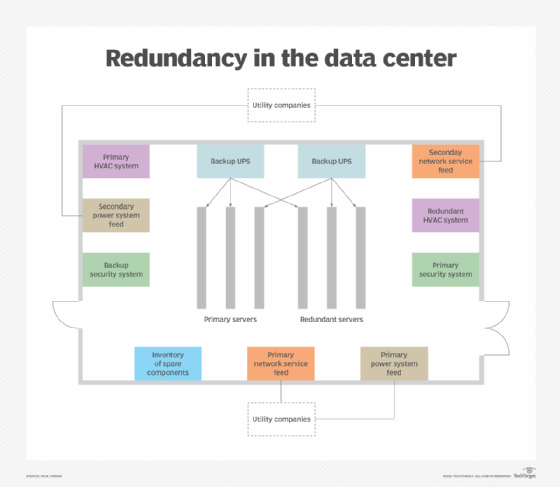Who Pays Redundancy Money? A Detailed Overview for Employers and Employees
Who Pays Redundancy Money? A Detailed Overview for Employers and Employees
Blog Article
Examining the Interplay Between Company Redundancy and Organizational Adaptability for Future Development
In the vibrant landscape of today's service globe, the elaborate partnership in between business redundancy and organizational flexibility arises as a crucial factor for continual growth and success. Firms frequently encounter the difficulty of striking a delicate balance between keeping a level of redundancy to minimize dangers and cultivating adaptability to react quickly to the ever-evolving market demands.
Importance of Business Redundancy
Business redundancy is a critical aspect that boosts organizational resilience and reduces functional risks. By integrating redundancy actions within the organizational framework, firms can much better endure unexpected disruptions and changes in business atmosphere. Redundancy acts as a critical buffer, permitting companies to adapt and react efficiently to unexpected obstacles without compromising important operations.
One secret facet of the relevance of business redundancy is its duty in making sure continuity during times of dilemma. When encountered with sudden changes or emergency situations, repetitive systems, resources, or personnel can step in to keep vital features and avoid prevalent interruptions. This connection not just safeguards the company's online reputation and customer trust yet likewise reduces economic losses and operational downtime.

Strategies for Organizational Adaptability

Another essential approach is purchasing modern technology and infrastructure that can sustain versatility and scalability. Applying digital devices, automation, and information analytics can enhance operations, enhance performance, and provide important insights for informed decision-making. Moreover, creating adaptable business frameworks that permit fast modifications to market characteristics and customer demands is crucial for staying affordable in a rapidly advancing setting. By proactively identifying potential disturbances and chances, organizations can proactively adapt and grow in an ever-changing service landscape.
Balancing Redundancy and Adaptability
Achieving a harmonious stability between operational redundancy and organizational flexibility is extremely important in browsing the intricacies of a vibrant company environment. Striking the ideal equilibrium in between redundancy and adaptability is a delicate process that calls for a deep understanding of the company's objectives, sector characteristics, and risk tolerance.
To achieve this balance, firms require to perform routine pop over to this site analyses of their operations to identify locations where redundancy is needed for risk mitigation and where adaptability can drive advancement and growth. Carrying out flexible structures, promoting a culture of continual discovering and enhancement, and urging open communication across all degrees of the organization are vital techniques to harmonize redundancy and adaptability successfully. By aligning these 2 essential aspects, firms can position themselves for lasting growth and success in an ever-changing business landscape.
Case Researches on Adjustment Success
In analyzing instances of effective business adaptation, it becomes evident that the interaction in between functional redundancy and versatility is a specifying element in forming resilient companies. A DVD rental service, Netflix showed remarkable flexibility by transitioning right into a streaming system when digitalization disrupted the industry. These instance research studies underscore the value of operational redundancy paired with business flexibility in promoting long-term growth and competition.
Structure Resilience for Future Growth
Structure resilience for future development calls for a critical positioning of operational processes with market characteristics and arising patterns. Companies should adapt to transforming settings by promoting a society of flexibility, technology, and constant renovation. Durability involves not only jumping back from problems yet additionally proactively getting ready for future difficulties. One vital aspect of structure resilience is purchasing robust risk monitoring strategies to reduce potential interruptions. This consists of situation preparation, branching out supply chains, and establishing contingency plans for various contingencies (who pays redundancy money).
In addition, fostering solid relationships with stakeholders, such as clients, staff his explanation members, providers, and the community, is essential for maintaining and weathering unpredictabilities count on and support throughout rough times. Efficient communication and transparency play an essential duty in building strength, as they help help with and align assumptions collaboration in navigating uncertainties.
Moreover, companies need to focus on discovering and advancement initiatives to upskill employees and equip them with the necessary tools to adapt to changing scenarios. By spending in their workforce, companies can improve their adaptability and agility, eventually strengthening their strength for lasting future growth.
Final Thought

In the vibrant landscape of today's company globe, the straight from the source complex connection in between firm redundancy and organizational adaptability emerges as a vital element for continual growth and success. Companies often deal with the obstacle of striking a delicate equilibrium in between keeping a degree of redundancy to reduce dangers and promoting flexibility to react quickly to the ever-evolving market needs.To attain this balance, companies require to perform normal analyses of their procedures to determine areas where redundancy is essential for risk mitigation and where adaptability can drive technology and development.In verdict, the interaction in between company redundancy and business adaptability is essential for future growth. Structure strength with a mix of redundancy and adaptability will certainly make sure that companies are prepared for the obstacles of the future.
Report this page